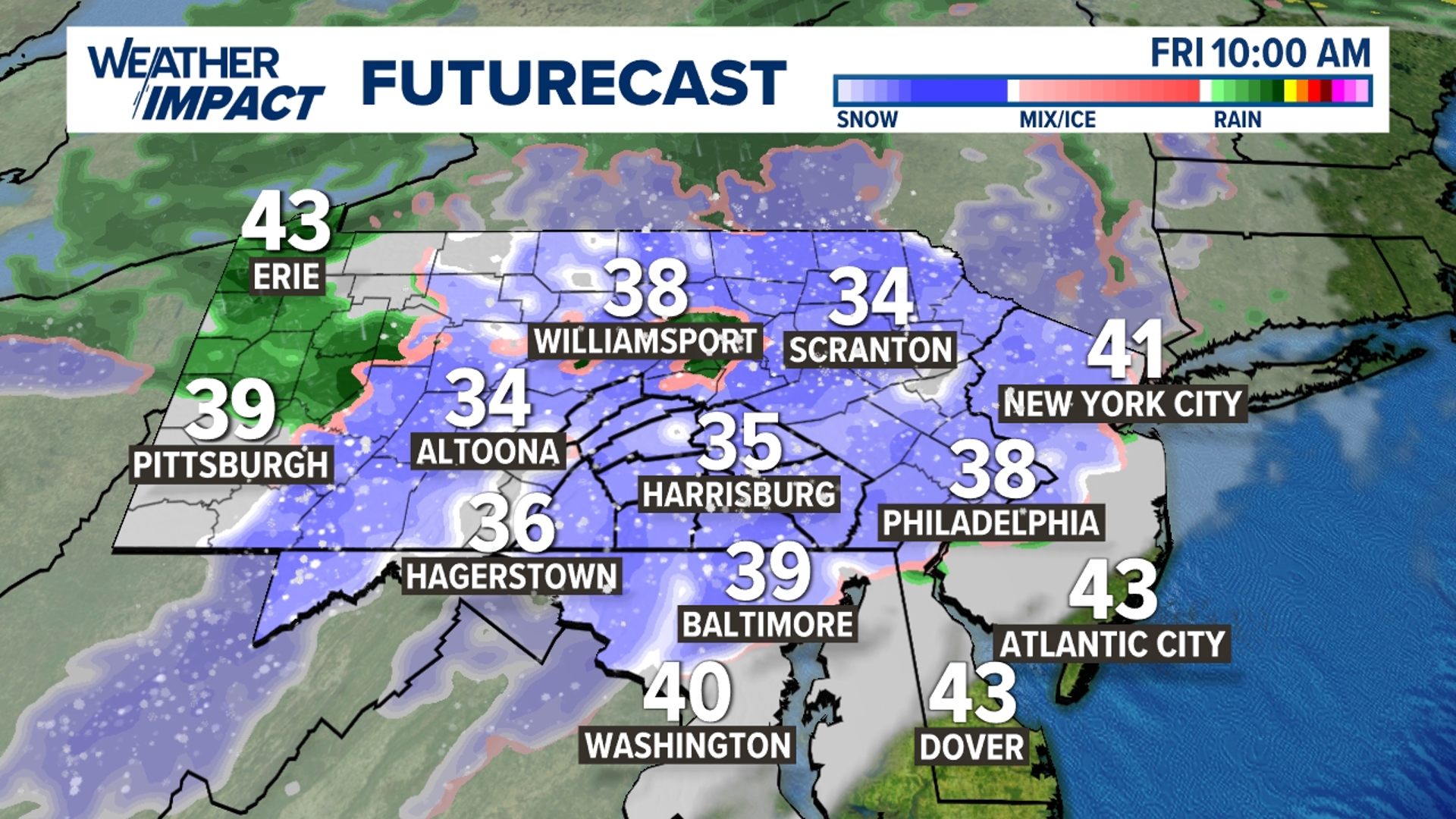The men and women of the National Weather Service work their tails off each and every day, all across the country and its territories to bring you life-saving watches, warnings, advisories and more.
Until they can't.
First off, it should be noted that I reached out to our local NWS office in State College for comment. I didn't expect the talented, intelligent staff there to be able to do so -- and that assumption was correct.
The response that they were able to give, provided by Warning Coordination Meteorologist Jonathan Guseman, was copied and pasted from the National Weather Service during the nationwide outage you'll read about below, on the morning of March 30th.
"The NWS has been experiencing nation-wide internet and communications issues overnight and this morning. You may not be able to access products on our webpages, or these products will be old. Technicians are actively working to resolve these issues as soon as possible. Local offices continue to issue watches, warnings and forecasts and they are available on some external websites. We apologize for any inconvenience this has caused."
This is not something new.
For more than a decade, the NWS has been battling data issues, according to the Washington Post. To put it simply, there's too much data and not enough space (bandwidth) to reliably keep up with internet traffic.
Let's set this up. On March 30, a large severe weather event set up across the southern states for the second time in less than a week. There were numerous warnings from Tennessee through Georgia into the evening and overnight, including flash flooding warnings.
At 2:02AM Eastern, the National Weather Prediction Center sent out this tweet.
If you follow the thread, they were not able to back up their rainfall forecast -- in the midst of a flooding situation.
NWS Chat, a vital tool that I and thousands of meteorologists use to disseminate information to the public, was also down.
So was all of Weather.gov, according to reports. The Weather and Climate Operational Supercomputing System was not ingesting external partner data.
It even disseminated to the local level, affecting the distribution of NWS products nationwide. That wouldn't stop the issuance of a watch, warning, or advisory technically. But it would stop the word from getting out reliably, unless you own a NOAA Weather Radio (which you should by the way), or follow the local office on social media.
The outage lasted around seven hours. That may not sound like much on a usual day, right? But we're talking about a crucial government entity, that saves lives every day, essentially losing most of that life-saving power during a severe weather event.
To quote Matthew Cappucci from the Washington Post's Capital Weather Gang, "The agency has good scientists – who are suffering from bad technology."
NWS Chat is rarely reliable in a major severe weather event, as meteorologists across the country may tune in to a specific forecast office's chat that often can crash the server in which its set upon.
In fact, meteorologists often remind people to stay off NWS Chat if you don't have to be on it during a specific event.
Here's the problem: It's 2021, and you're having to tell people to stay off a chat to not crash it?
It even prompted the state climatologist from North Carolina to chime in.
And to add insult to injury, for the second time in a year, the local NWS office in Birmingham, AL was reprimanded the week before (you may remember former president Trump's "Sharpiegate" incident).
Days before a severe weather event in mid-March, the office switched to Slack -- an online chat platform -- because the NWS Chat was unreliable, according to Chief Meteorologist James Spann from last week's blog. NWS headquarters got wind of it and forced the office to switch back to NWS Chat for a massive, and deadly, severe weather event on March 25.
It crashed then, too.
In an interview with the Washington Post, former NOAA head Neil Jacobs said a large portion of the problem could be attributed to the fact that NWS handles its platforms on internal servers as opposed to cloud data. You can find more about his comments and more intricate details of the outage here.
Basically, those servers are jam packed with weather data, growing more and more complex and requiring more bandwidth. There's just not enough to go around to power a chat that resembles something from Windows 95 on top of complex weather data.
I cannot reiterate enough, this is not a commentary on the men and women of the National Weather Service, current and former leaders of the National Oceanic and Atmospheric Administration (NOAA) and more.
It's simply the acknowledgement of a problem.
You may recall in another blog about how we can't see everything on radar across the country. That's another problem.
It's all a numbers game. Of course, more funding would help alleviate the issue. But if you ask a member of NWS if they have faith it's coming in the near future, when they've been promised a fix of the issue for years, I would wager they'll tell you they're not holding their breath.
In the meantime, it's certainly a proper time to reach out and thank a local meteorologist of our local forecast office in State College. They do a darn good job each and every day. They're our friends, our partners and our guardians day-to-day to help keep you Weather Smart.
Until next time,
-Chief Meteorologist Bradon Long



